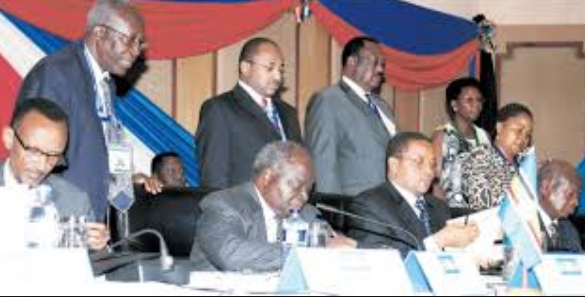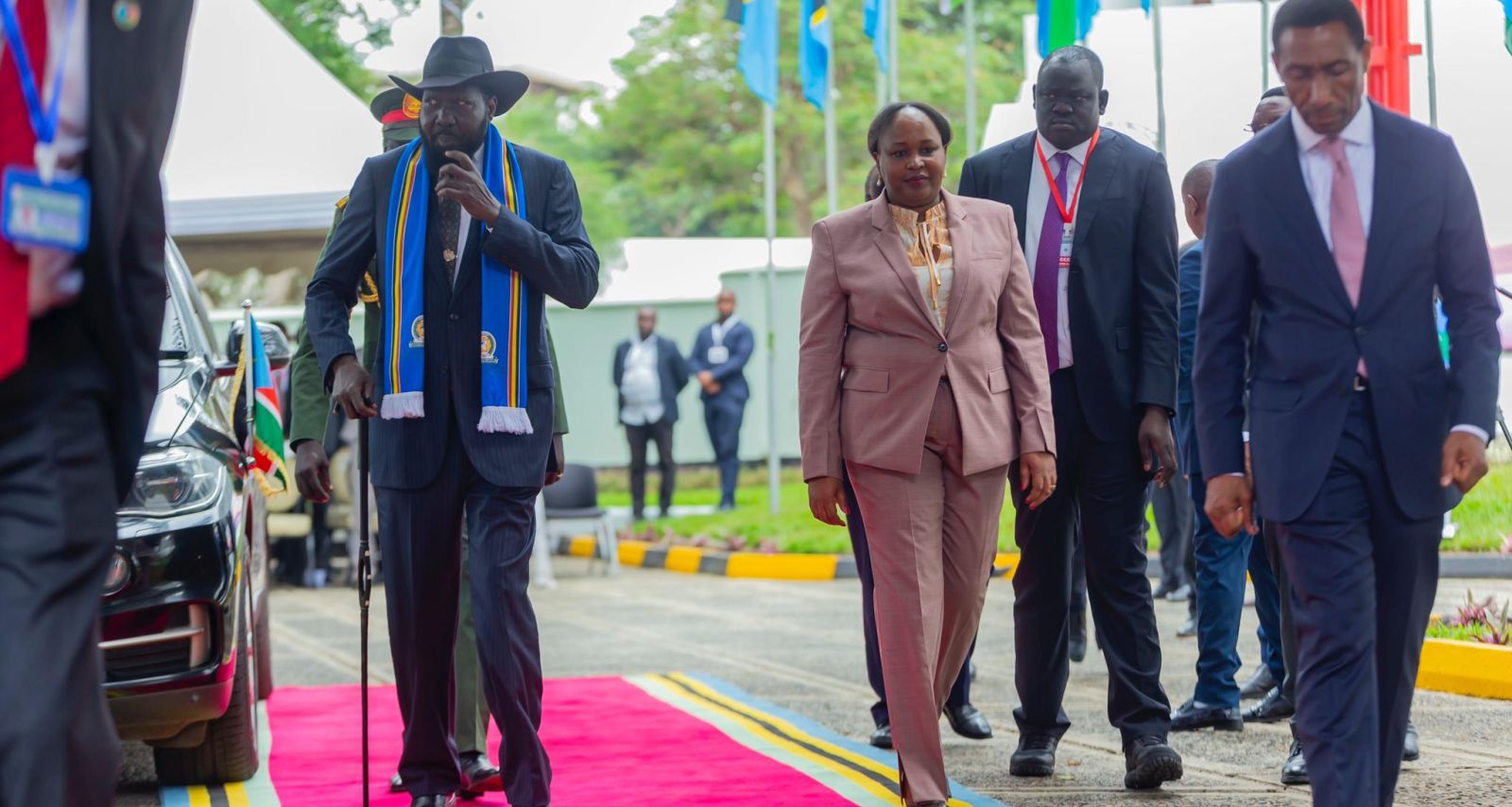25 Years of EAC Regional Integration: Milestones in the Customs Union
The Customs Union is the first pillar of the EAC regional integration. The objective of the Customs Union is to promote regional economic integration by eliminating trade barriers and fostering a competitive environment for goods produced within the region. Through the Customs Union, the EAC seeks to remove internal tariffs and establish a common external tariff on goods imported from outside the region, creating a harmonized trading space among Partner States. This policy enhances trade efficiency, reduces production costs, and strengthens intra-regional trade. Additionally, the Customs Union aims to streamline customs procedures, curb smuggling, and increase revenue by encouraging compliance, all of which contribute to the broader goals of economic growth, poverty reduction, and improved market access for East African businesses.
As we mark the 25th anniversary of the East African Community (EAC), we celebrate a journey of transformational progress and partnership among EAC Partner States. The Customs Union, a cornerstone of regional integration, has enabled trade facilitation, economic growth, and social cohesion across the region. We highlight some of the key achievements that have shaped our region's prosperity over the last 25 years:
i. The Signing of the Customs Union Protocol
The signing of the Customs Union Protocol on 2nd March, 2005, marked a pivotal moment in the history of the East African Community (EAC) and regional integration in East Africa. This foundational agreement is a commitment by the EAC Partner States to establish a unified customs framework that would eliminate tariffs on intra-regional trade and create a Common External Tariff (CET) for external imports. This ambitious step was designed to enhance trade, attract investment, and foster economic collaboration among member states. The Protocol laid the groundwork for subsequent initiatives, such as the Single Customs Territory, and has since played a critical role in transforming the region into a vibrant trade hub. By committing to shared economic policies and procedures, the EAC Customs Union has significantly contributed to economic growth and strengthened the ties between Partner States, reinforcing the vision of a united East African community.

EAC Heads of State sign The Protocol for the Establishment of the EAC Customs Union on 1st July, 2005.
ii. Introduction of the Common External Tariff (CET) with the Four-Tariff Bands
The EAC adopted a structured Common External Tariff (CET) system, designed to protect local industries while fostering trade efficiency. The currently implements a four-band Common External Tariff with a minimum rate of 0% for raw materials and capital goods; 10% for intermediate goods not available in the region; 25% for intermediate goods available in the region and 35% for imported finished products available in the region. There are other products classified as Sensitive products which attract a rate above 35% as listed in Schedule 2 of the CET.
Click to Access the digitalized EAC Common External Tariff (CET).
The implementation of the Common External Tariff (CET) has significantly enhanced trade within the EAC by reducing trade barriers and ensuring a level playing field for local industries. This has led to increased intra-regional trade volumes and stimulated economic growth, fostering greater cooperation among Partner States. The intra-EAC trade accounting for imports and exports in the 6 EAC Partner States vis a vis the rest of the world, grew from 13.1% in 2019 at a value of US$ 7.1 billion to 15.04% in 2021 at a value of US$ 9.8 billion. EAC trade value in 2022 for the 6 EAC Partner States grew in value to US$ 10.91 billion with DRC joining the community the total EAC trade (7 EAC Partner States) grew to US$11.8 Billion.
EAC Trade Trends
iii. Launch of the Single Customs Territory (SCT)
The EAC Single Customs Territory (SCT) was officially launched on 1st January, 2014. This initiative aimed to streamline customs procedures, facilitate trade, and promote economic integration among the EAC Partner States. The implementation of the Single Customs Territory (SCT) has streamlined the movement of goods across borders by consolidating customs procedures, reducing border delays, and cutting trade costs.
Implementation of the Single Customs Territory has reduced the cost of doing business by 70%, and has reduced truck turn-around time from 21 days to less than 4 days from the point of entry to the final destination.
A highlight of the operations of the EAC Single Customs Territory
iv. Establishment of One-Stop Border Posts (OSBPs)
The One-Stop Border Post (OSBP) concept simplifies cross-border trade by allowing customs and immigration officials and other government agencies from neighbouring countries to conduct joint inspections at a single location, significantly reducing wait times for vehicles, goods and passengers, thereby eliminating redundant processes.
This innovative approach has enhanced trade efficiency, decreased transit times by up to 72%, and fostered stronger economic ties between EAC Partner States. The region has 16 One Stop Border Posts that are fully operational. Additionally OSBP between Kenya and Ethiopia, Tanzania and Zambia are operational.
The Once Stop Border Post (OSBP) is a border facility that combines two stops for national border control processing into one and consolidates border control functions in a shared space for exiting one country and entering another.
v. Digital Integration of Customs Procedures
The EAC Customs Union has embraced digitalization through initiatives such as the Electronic Cargo Tracking System (ECTS) and the Regional Customs Transit Guarantee (RCTG). These digital tools enable real-time tracking of cargo, enhancing security and reducing the risks of delays.
Through these innovations, revenue collections in the region have grown, contributing to a 15% increase in customs revenue over the last decade.
vi. Elimination of Non-Tariff Barriers (NTBs)
Significant progress has been made in identifying and reducing Non-Tariff Barriers (NTBs) that hinder trade within the EAC. Through collaborative initiatives and the establishment of frameworks for monitoring and reporting NTBs, such as the NTBs Act, 2017 the EAC has successfully identified and reduced various obstacles, such as lengthy customs procedures, excessive licensing requirements, and arbitrary roadblocks at borders.
The introduction of the EAC NTB Monitoring Mechanism has facilitated real-time tracking and resolution of these barriers, leading to increased transparency and accountability among Partner States. As a result, intra-EAC trade has grown substantially, contributing to economic integration and enhancing the competitiveness of regional industries.
An overview of the EAC NTBs Reporting App
vii. Harmonization of Standards and Simplification of Trade Procedures
The harmonization of quality standards and trade procedures across Partner States has lowered barriers for businesses, enabling small and medium enterprises (SMEs) to thrive in regional markets.
At least 1,918 East African standards have been harmonized, an initiative that has led to a growth in exports within the EAC and fostered a predictable trading environment, creating jobs and sustaining livelihoods for millions across the region.
Download EAC Standards Catalogue 2024 Here
viii. Trade Facilitation
The EAC has made significant strides in trade facilitation through the implementation of several strategic policies aimed at enhancing regional economic integration. The EAC Trade Policy, 2021 provides a framework for promoting intra-regional trade and investment by streamlining customs procedures and reducing trade barriers. Complementing this, the EAC MSME Policy focuses on supporting micro, small, and medium-sized enterprises by facilitating access to finance, improving market linkages, and providing business development services, thereby enabling these businesses to thrive in a competitive environment.
Recognizing the vital contribution of MSMEs to economic growth and job creation, the has simplified regulatory frameworks and facilitating access to markets both within the region and beyond. The EAC has implemented various programs, such as training workshops and the EAC MSMEs Trade Fair, to equip MSME owners with essential skills in entrepreneurship, marketing, and technology. These comprehensive efforts collectively empower MSMEs, fostering innovation and contributing to sustainable economic development in the region.
On international trade the EAC has adopted the EAC Schedule of Tariff Concessions for the African Continental Free Trade Area (AfCFTA), which encompasses Category A products. This schedule, covering 90% of tariff lines, will be implemented over a ten-year timeframe, facilitating greater access to markets within the continent. Additionally, the EAC has established a Schedule of Specific Commitments on Trade in Services under the AfCFTA framework, which aims to enhance service sector integration and promote trade in services among member states. Notably, trading under AfCFTA preferences has already commenced, with Rwanda and Kenya exporting goods to Ghana, marking a significant step towards realizing the benefits of the AfCFTA for EAC Partner States. These initiatives reflect the EAC's commitment to enhancing regional and continental trade, driving economic growth, and fostering stronger trade ties across Africa.
Explore the EAC Trade Information Portal
ix. Investment Promotion
To further bolster investment, the EAC has developed several policy documents and frameworks that provide a solid foundation for regional economic growth. The EAC Regional Investment Policy, adopted in 2006, aims to create a conducive environment for private sector investment by harmonizing regulations and promoting investor confidence.
To further bolster investment, the EAC has developed several policy documents and frameworks that provide a solid foundation for regional economic growth over the past 25 years. A notable achievement is the adoption of the EAC Regional Investment Policy in 2006, which aims to create a conducive environment for private sector investment by harmonising regulations and promoting investor confidence. This policy has led to the establishment of a more predictable and stable investment climate, resulting in increased foreign direct investment (FDI) flows into the region.
x. Establishment of the East African Competition Authority
The EAC Competition Authority, an institution of the EAC grounded in the Treaty and various protocols, is tasked with promoting and protecting fair competition while ensuring consumer welfare across the region. The Authority plays a crucial role in regulating cross-border anti-competitive business practices, thereby advocating for efficient and competitive markets within the EAC. Through its investigative and adjudicative functions, the Authority regulates market structures by controlling mergers and acquisitions, oversees market conduct by prohibiting anti-competitive practices, and protects consumers from misleading representations in transactions. Additionally, its commitment to advocacy and capacity building has enhanced awareness and understanding of competition laws among businesses and consumers alike. This robust framework not only fosters a fair trading environment but also contributes to regional economic integration and sustainable growth within the EAC.
More on the East African Competition Authority
These milestones under the EAC Customs Union highlight the progress achieved over 25 years and showcase the EAC’s commitment to enhancing regional integration and economic prosperity. Together, we look forward to a future of even greater collaboration and shared success in the East African region.





























